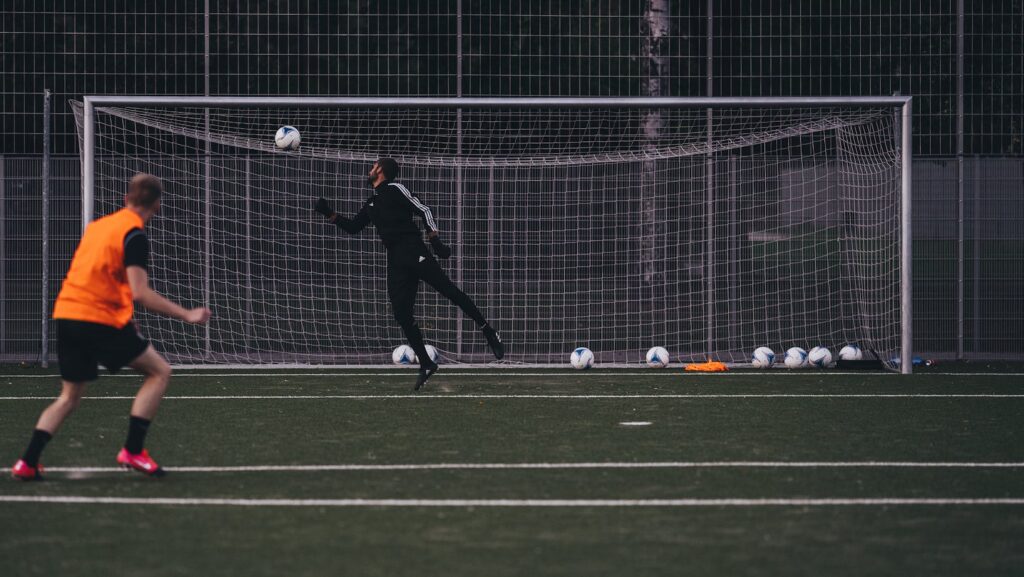Football, the world’s most popular sport, isn’t just about the players’ skills or the thrill of the game. It’s also about the constant evolution and innovation that keeps the sport fresh and exciting. From the advent of goal-line technology to the introduction of Video Assistant Referee (VAR), football’s face is consistently changing.
In this article, we’ll delve into the fascinating world of football innovations, exploring how they’ve revolutionized the game we all love. We’ll unearth how these advancements have not only enhanced the viewing experience but also ensured fair play on the pitch. So, if you’re a football enthusiast keen on understanding the tech behind the game, you’re in for a treat.

Evolution of Football Innovations
Throughout the years, football innovations have consistently emerged, significantly enhancing the sport’s dynamism, fairness, and spectator appeal. These changes constitute what can be considered an evolution, marked by diverse milestones and impacts of early developments on gameplay.
Historical Milestones in Football Technology
Dating back to the inception of the sport, there have been multiple technological milestones that have shaped football as known today. The sport witnessed the introduction of leather balls in the 19th century, replacing the animal bladders previously used. This offered a more controlled round shape, thus enhancing the game’s precision.
Then came the innovation of floodlights in the late 1870s, enabling evening matches, extending the scope and outreach of the game. In the 20th century, the advent of artificial turfs offered a durable and weather-resistant alternative to natural grass.
However, the transformational impact of technology became most apparent in the 21st century with goal-line technology and Video Assistant Referee (VAR), assuring an unprecedented level of fairness in decision-making.
Impact of Early Innovations on Gameplay
The early innovations in football brought significant changes to the gameplay. Introduction of leather balls propelled the game towards becoming more strategy-driven. Players could predict and control the ball’s trajectory better, leading to innovative tactics and styles of play.
Further, artificial turfs greatly expanded the geographic range of football, making it a truly international sport. Durability under varied extreme weather conditions facilitated uniform gameplay, unhindered by climatic vagaries.
Indeed, every technological advancement, whether minor or major, has influenced the footballing world in its unique way, shaping it into the global phenomenon it is today. The evolution continues, fueled by the relentless pursuit of fairness, precision, and excitement in the beautiful game.

Football Innovations
Football’s evolution didn’t stop with goal-line technology, the Video Assistant Referee, or other trailblazing milestones. Recent years have seen promising modern innovations that continue to redefine the beautiful game, all in the interest of bringing excitement and precision to new heights.
Advances in Ball Technology
Modern innovations now include high-tech advancements in ball technology that are setting new courses for football. Football manufacturers today aim for optimal performance, incorporating cutting-edge technology into their designs. Take the Adidas Telstar 18, for instance. A chip embedded inside this FIFA World Cup 2018 official ball works with users’ smartphones, providing access to exclusive content and information.
Similarly, Select’s Intelligent Ball offers a built-in chip to track and deliver precise data on shot power, ball speed, and curve effect, offering another level of sophistication to the game. These forward thinks indicate a decisive bold step toward a new age in football.
Wearable Tech for Players
Aside from advanced ball technology, wearable technology has been making waves in the industry as one of the tech-driven improvements in recent years. Devices like GPS vests have become critical for player development, performance analysis, and injury prevention.
The Catapult Sports’ OptimEye S5, for instance, offers a series of sensors and analytics to track players’ heat maps, exhaustion levels, and physiological data. Collected data aids coaches in strategic decision-making, offering enhanced insights into player performance.
Similarly, Zebra Technologies’ RFID system, used extensively in American football, offers real-time player tracking to capture every player’s movement, speed, and distance covered at any point during the game.
These innovations in wearable tech have established a robust framework for holistic player assessment and regulation of playing time, further driving intelligent and tactical gameplay. By ensuring players’ optimal health and performance, these modern innovations, undoubtedly, dictate the future direction of football.

